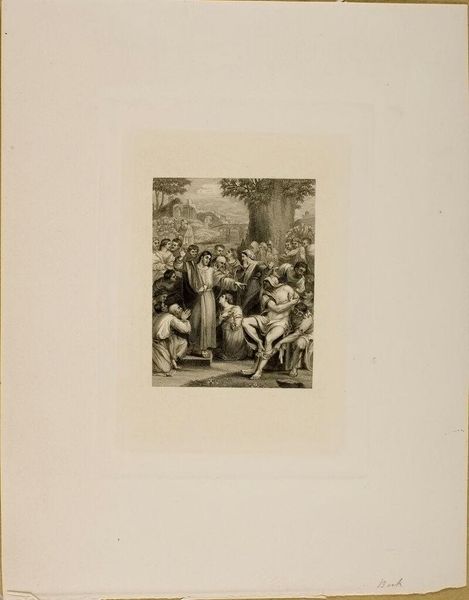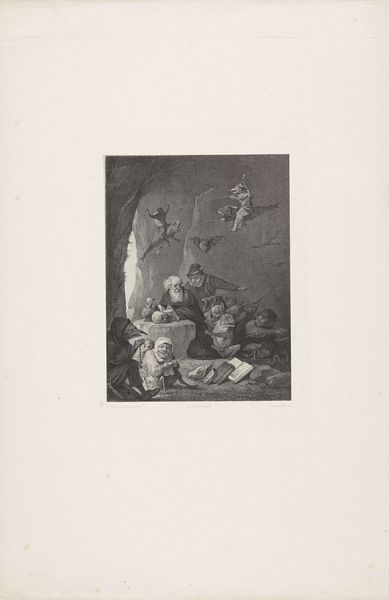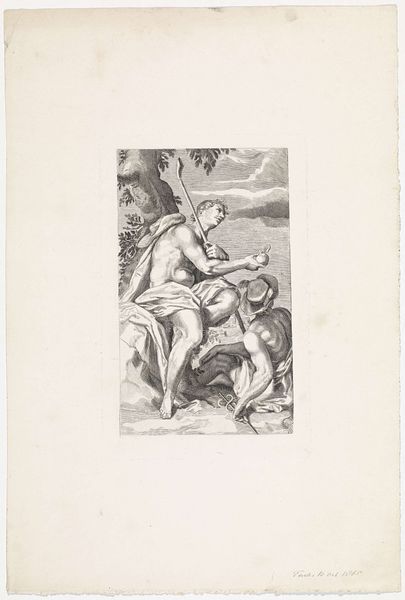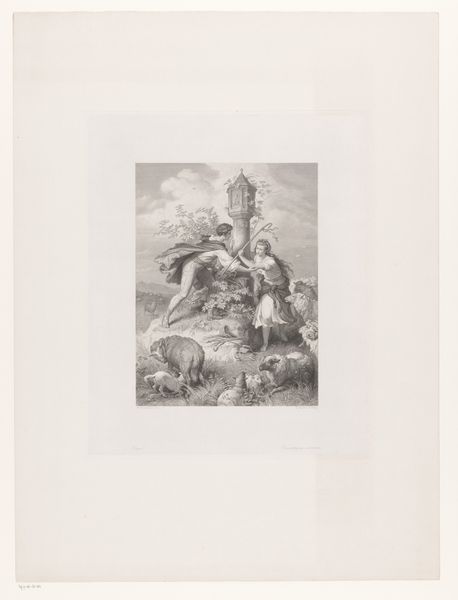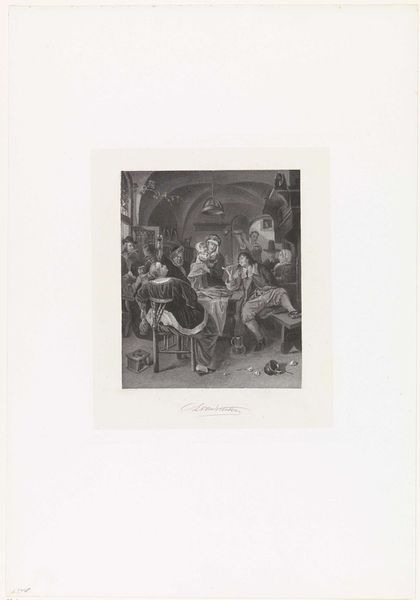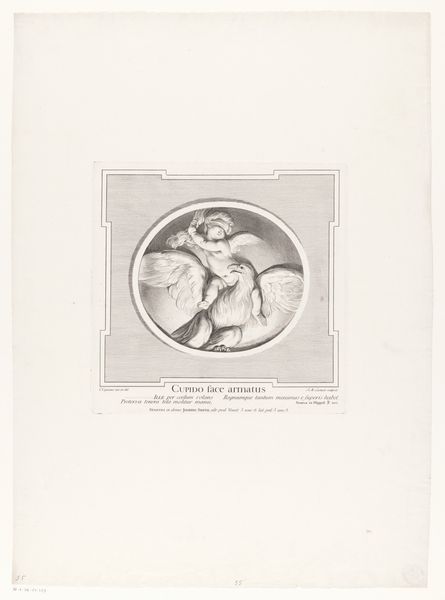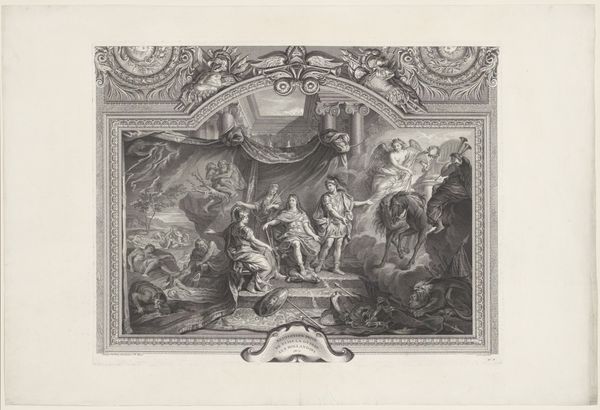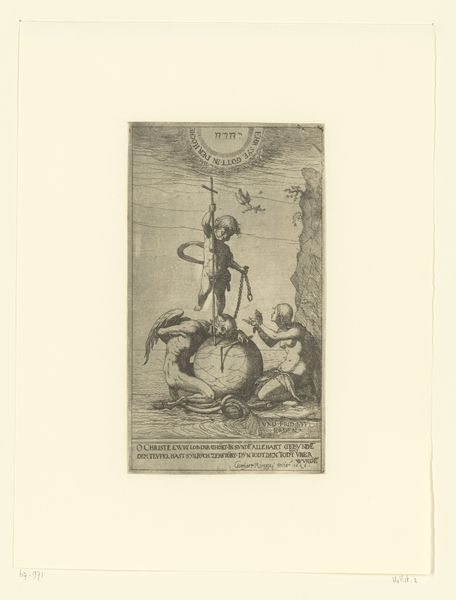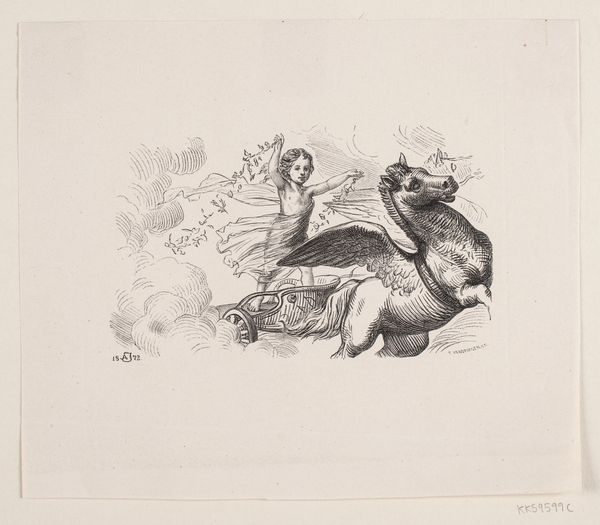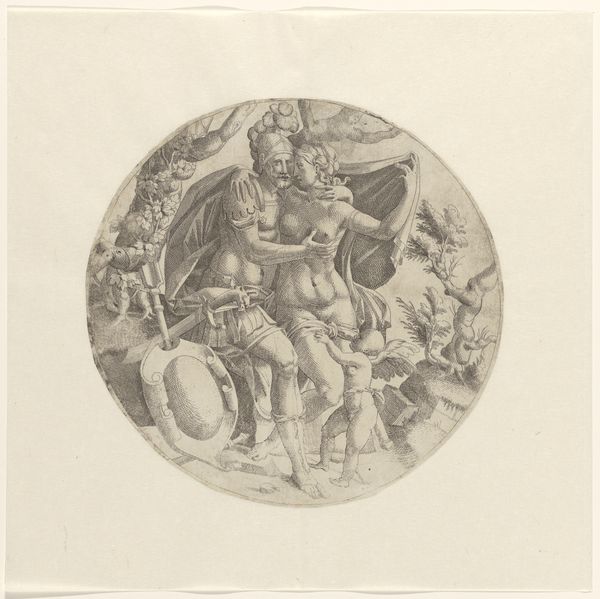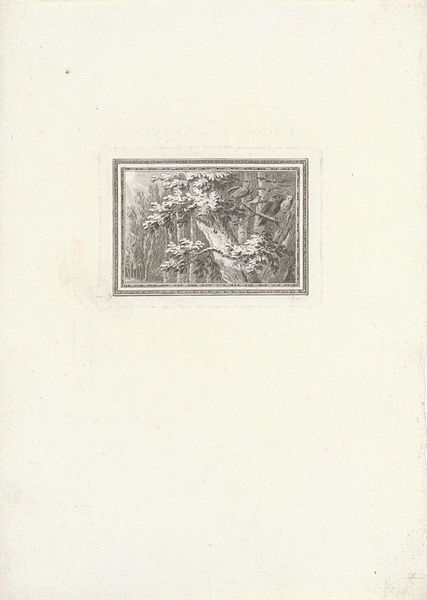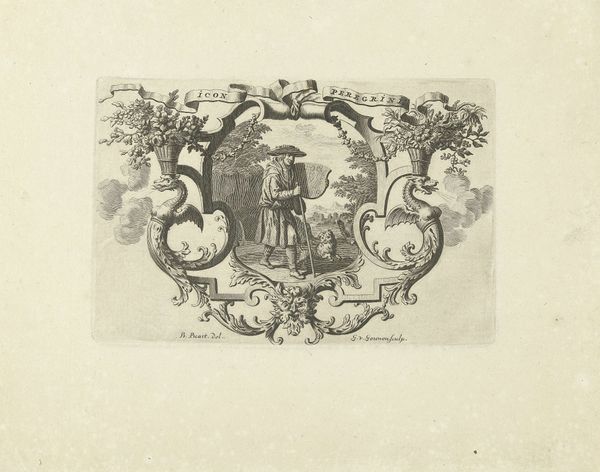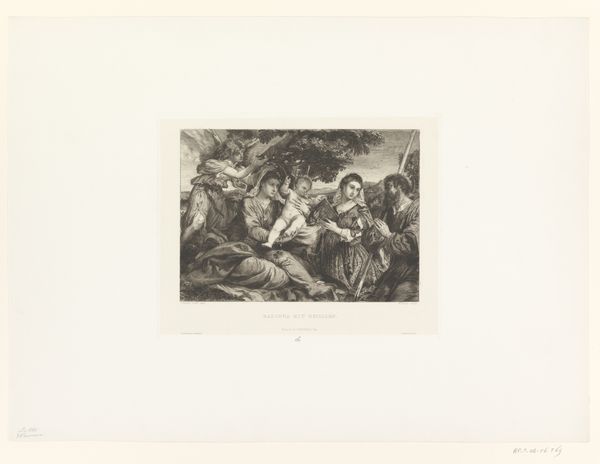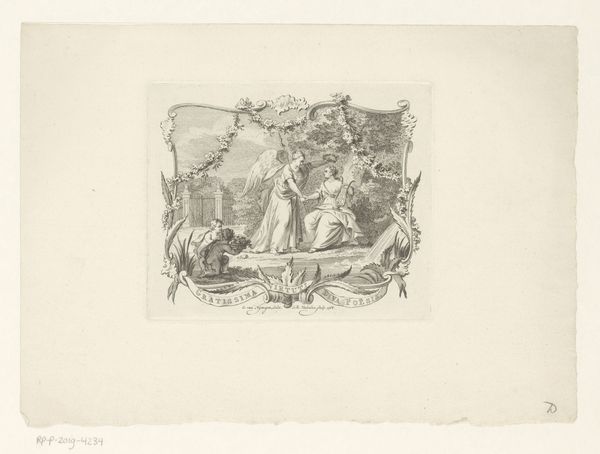
drawing, pencil
#
drawing
#
allegory
#
figuration
#
pencil drawing
#
pencil
Dimensions: height 388 mm, width 464 mm
Copyright: Rijks Museum: Open Domain
Curator: Hmm, a rather academic scene greets us, doesn’t it? Something from a textbook almost, rendered meticulously in pencil. Editor: True, that first impression—classical but somehow a bit…cold? Stiff? What is it, formally? Curator: Well, we're looking at "Zittende vrouwelijke personificatie met genius," a drawing currently held at the Rijksmuseum. It’s attributed to Gustav Eilers and is believed to have been created sometime between 1844 and 1911. Editor: Ah, an allegory, of course. The seated figure draped in classical garb, the little winged genius hovering above her, clutching torches...It feels a bit heavy-handed, doesn't it? What sort of symbolism are we unpacking here? Curator: One assumes the female figure represents some abstract concept—Wisdom, perhaps, or Liberty? The globe at her side, the book... these all suggest learning, knowledge. The genius with torches likely symbolizes enlightenment, guidance. It's a very traditional, almost formulaic iconography. Editor: But the rendering… the detail! Look at the way the light catches the folds of her drapery, or the texture of the globe. It’s incredibly precise. What effect does that meticulous style bring? It almost undermines the airy symbolism. Curator: Precisely. There’s a tension between the allegorical subject and the almost photographic realism of the drawing style. It is as if Eilers wanted to make this grand, abstract idea utterly tangible, verifiable. It takes all the mystery out of the symbolic. Editor: So instead of floating in the realm of ideas, she’s firmly grounded on…what looks like a somewhat uncomfortable chair. I’m drawn to the miniature statuettes flanking her. Curator: Right. It’s like Eilers has constructed this entire symbolic apparatus around her. And given that the museum specifies that he worked on architectural renderings of buildings, maybe he treated her just as he did a construction project. Every line perfect, down to earth and rationalized. Editor: I see your point. The dream is gone... It's all draftsmanship. Well, that makes the piece both less and much more, perhaps? What can the soul truly learn, or know? Maybe the cold is simply realism. Curator: Perhaps Eilers wanted us to question what is being embodied here. If a form, and a perfect, concrete pencil rendering can offer the answer? Perhaps, Gustav himself asks what a personified female in waiting could offer beyond mere presence and availability. Editor: Thank you both for offering your views and reflections!
Comments
No comments
Be the first to comment and join the conversation on the ultimate creative platform.
